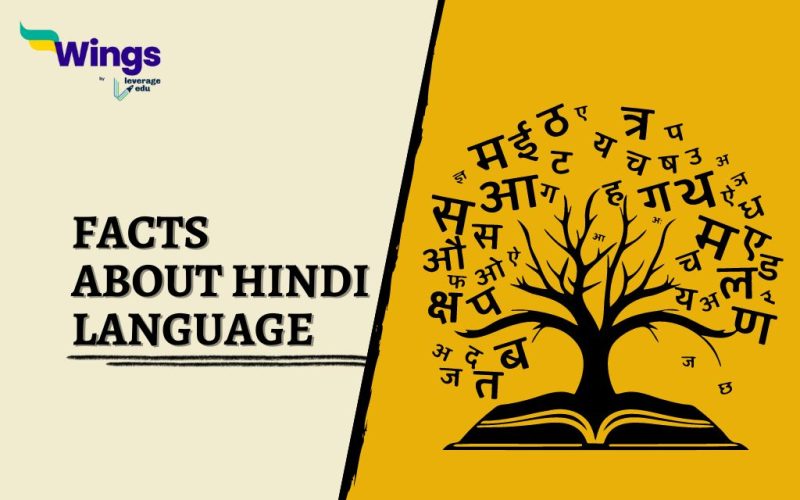Did you know that one of the world’s oldest languages is spoken by over a billion native speakers in India? That’s right—it’s Hindi! From its mind-boggling history to unique sentence structure and phrases, facts about Hindi language are truly fascinating. For instance, did you know that the horizontal line at the top of the letters forms words in Hindi? In this blog, you will read more interesting facts about the Hindi language. So, whether you are preparing for entrance exams after 12th or school competitions, these useful facts will give you a headstart. Let’s begin right away.
Table of Contents
Unknown Facts About the Hindi Language
1. Hindi got its name from the Persian word Hind, meaning the Land of Indus River.
2. Hindi is strongly influenced by the Sanskrit language.
3. It is believed that Hindi evolved in its present form through the Prakrit and Apabhramsa languages.
4. Hindi belongs to the Indo-Iranian sub-family of the Indo-European languages.
5. It consists of 11 vowels and 33 consonants.
6. On 14 September 1949, the Government of India accepted Hindi as one of the official languages.
7. Part XVII of the Indian Constitution approves Hindi in Devanagari script and English as a few of the official languages of the Union.
8. In 1965, Hindi became the only working language of the Union Government.
9. Hindi is the fourth most-spoken language in the world after Mandarin Chinese, Spanish, and English.
10. The Central Hindi Directorate of the Government of India regulates all provisions relating to the Hindi language.
General Facts About the Hindi Language
1. Many commonly used words such as Surya Namaskar are a part of the Oxford Dictionary.
2. The first online journal in the Hindi language was published in 2000.
3. The first Hindi poem was composed and released by Amir Khusro.
4. In 1881, Bihar replaced Urdu with Hindi as its official language. It became the first Indian state to do so.
5. Every year India celebrates September 14 as Hindi Diwas or Hindi Day to honour this language and its beauty. It also highlights India’s linguistic diversity.
6. Atal Bihari Vajpayee, the former Prime Minister of India, once delivered a speech in the Hindi language at the United Nations in 1977.
7. Apart from India, Hindi is commonly used in many countries including Sri Lanka, the UAE, Singapore, Pakistan, the USA, and New Zealand.
8. Apart from Fijian and English, Fiji Hindi is the official language of Fiji, a country in Oceania.
9. Like other European languages, Hindi is written from left to right.
10. Words in the Hindi language are written as they are pronounced. This is because each character has a different sound.
Also Read: Did you Know These Facts About Sanskrit?
Fun Facts About the Language Hindi
1. There are no articles (‘the’ or ‘a’) in Hindi.
2. The Hindi language follows a sentence structure in which the verbs always go at the end of the sentences. Similarly, the auxiliary verbs go at the very beginning.
3. In Hindi, all nouns have genders which can be either masculine or feminine.
4. Some words such as doctor, station, hospital, and cycle are read and pronounced as they are in English but written in Hindi.
5. The earliest evidence of printing in the Hindi language is found in John Gilchrist’s Grammar of the Hindustani Language.
6. Lalloo Lal’s Prem Sagar is considered the first published Hindi book.
7. Namaste is the Hindi word used to greet others with respect.
8. The first Hindi Typewriters were made in the 1930s.
9. Premchand, Jaishankar Prasad, Mahadevi Verma, Suryakant Tripathi, and Dushyant Kumar are some of the most popular Hindi writers.
Find more informative reads below!
FAQs
What are the fun facts about the Hindi language?
Some fun facts about the Hindi language are that it is heavily influenced by Sanskrit, all nouns are either masculine or feminine, and lastly, it consists of 11 vowels and 33 consonants.
What is the Speciality of the Hindi language?
The speciality of the Hindi language is that it is widely taught and learned in many countries except India. Moreover, it is the fourth most common language in the world.
Why is Hindi unique?
Hindi is unique because all nouns are either masculine or feminine and the verbs go at the end of the sentence. Similarly, the auxiliary verbs go at the beginning of the sentence.
Hope you had fun reading these interesting facts about Hindi language. If you want to know more about topics like this, then visit our Interesting Facts and General Knowledge page!
 One app for all your study abroad needs
One app for all your study abroad needs













